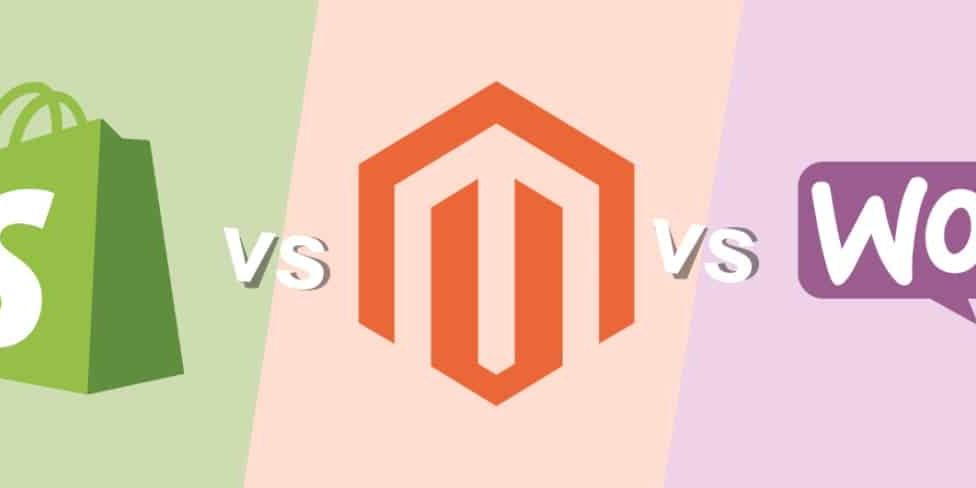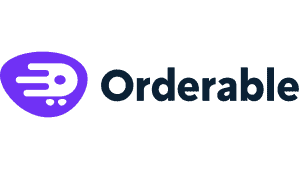Introduction
Choosing the right e-commerce platform is a crucial decision for any business owner venturing into the world of online retail. The platform you select can significantly impact your store’s functionality, user experience, and overall success. With numerous options available, it can be overwhelming to decide which is best suited for your specific needs. In this guide, we compare three of the leading e-commerce platforms—Shopify, WooCommerce, and Magento—each renowned for its unique features and benefits. We will examine how each platform rates on various critical factors such as ease of use, customization capabilities, scalability, costs, support, and SEO features. Whether you're setting up a new online store or thinking about switching platforms, this guide will provide you with the essential information you need to make an informed decision.
Key Factors for Comparison
To effectively compare Shopify, WooCommerce, and Magento, we will evaluate them across several vital factors. Each factor is chosen for its importance in the success and operation of an e-commerce business, and will be rated on a scale from 0 to 5, where 0 indicates very poor performance and 5 represents excellent performance. Here are the key factors we'll consider:
- Ease of Use:
- Definition: This refers to how user-friendly the platform is, including the ease of setup, management, and day-to-day operations.
- Importance: A platform that is easy to use can significantly reduce the time and technical expertise required to launch and maintain an online store.
- Customization Capabilities:
- Definition: This measures the flexibility of the platform in terms of design and functionality. It includes the availability of themes, plugins, and the ability to make custom changes.
- Importance: Customization is crucial for creating a unique brand identity and tailoring the shopping experience to meet specific business needs and customer expectations.
- Scalability:
- Definition: Scalability assesses the platform’s ability to handle increasing amounts of traffic and transactions without compromising performance.
- Importance: As businesses grow, they need a platform that can grow with them, supporting increased product lines and customer traffic without the need for a complete platform overhaul.
- Costs:
- Definition: This includes all costs associated with the platform, such as initial setup fees, monthly or annual hosting fees, transaction fees, and costs related to additional features or plugins.
- Importance: Understanding the total cost of ownership is vital for budgeting and ensuring that the platform offers good value for money.
- Support and Community:
- Definition: This factor looks at the quality and availability of official support from the platform provider, as well as the activity and helpfulness of its user community.
- Importance: Good support and a strong community can be invaluable resources for troubleshooting, learning, and networking.
- SEO Features:
- Definition: This refers to the built-in tools and external plugins available to optimize your store for search engines.
- Importance: Effective SEO features help ensure that your store ranks well in search results, which is essential for attracting organic traffic.
- Security:
- Definition: Evaluates the platform’s built-in security measures, compliance with standards like PCI, and the ease of implementing further security enhancements.
- Importance: Security is critical for protecting sensitive information and building trust with your customers.
Comparison of Platforms: Ease of Use
When choosing an e-commerce platform, ease of use is a critical factor, particularly for business owners who may not have extensive technical skills. Here's how Shopify, WooCommerce, and Magento stack up in terms of user-friendliness, installation, and day-to-day management.
Shopify
Rating: 5/5
- Setup and Installation: Shopify stands out for its exceptionally user-friendly interface. Setting up a store on Shopify is straightforward, with no technical skills required. Users can start selling products after a few clicks, thanks to its intuitive setup wizard.
- User Interface: The platform offers a clean, modern dashboard that makes it easy to manage products, orders, and customer data. Its drag-and-drop store builder simplifies the design process without the need for coding.
- Maintenance: Since Shopify is a hosted solution, it manages all software updates and security patches, minimizing the maintenance effort for store owners.
WooCommerce
Rating: 3/5
- Setup and Installation: WooCommerce is a plugin for WordPress, so it requires a working WordPress site to function. The setup process involves a bit more complexity, requiring users to handle hosting and install WordPress before adding the WooCommerce plugin.
- User Interface: WooCommerce leverages the WordPress user interface, which is familiar to many users but can be daunting for beginners. It offers extensive customization options, but making these changes often requires a steep learning curve and sometimes coding knowledge.
- Maintenance: Being self-hosted, WooCommerce requires the user to manage updates, backups, and security. This can be a significant burden for users without technical expertise, as they may need to manage additional plugins and compatibility issues.
Magento
Rating: 2/5
- Setup and Installation: Magento is known for its complexity and robustness, making it less accessible for beginners. Setting up a Magento store typically requires technical knowledge or the hiring of a developer, as the platform is designed with flexibility and customization in mind.
- User Interface: Magento’s admin panel is powerful but complex. It offers unmatched flexibility and features, which come at the cost of a steep learning curve. Navigating through its numerous options can be overwhelming for non-technical users.
- Maintenance: Like WooCommerce, Magento is self-hosted and demands significant maintenance. Regular updates, security checks, and performance optimizations require ongoing attention or professional support.
Summary of Ease of Use
When it comes to ease of use, Shopify clearly leads the pack, offering the simplest and most straightforward approach to e-commerce for users at all skill levels. WooCommerce offers a middle ground, suitable for those familiar with WordPress who need more control over their store and are willing to manage some technical aspects. Magento, while the most challenging in terms of ease of use, offers powerful capabilities for those who have the resources to harness its extensive features and handle its complexity.
In the next sections, we will explore how these platforms compare in terms of customization capabilities, scalability, costs, support, SEO features, and security. Each factor will help paint a fuller picture to guide potential users in selecting the platform that best fits their specific needs and capabilities.
Comparison of Platforms: Customization Capabilities
Customization capabilities are essential for tailoring an e-commerce platform to fit the unique branding and functional requirements of a business. Here, we assess how Shopify, WooCommerce, and Magento handle customization in terms of design flexibility, availability of themes and plugins, and the degree to which users can modify the platform.
Shopify
Rating: 4/5
- Design Flexibility: Shopify provides a wide array of professionally designed themes, both free and paid, that are optimized for mobile devices and various industries. While Shopify themes are somewhat customizable through a user-friendly interface, there are limitations to changes that can be made without accessing the platform's proprietary Liquid code.
- Plugins and Extensions: The Shopify App Store hosts thousands of apps that can extend the functionality of a Shopify store. These range from SEO tools to advanced analytics and marketing tools. While this vast selection covers nearly every need, reliance on apps can sometimes increase costs.
- Code Customization: Users with technical skills can access and edit HTML, CSS, and Liquid, Shopify’s templating language, to make deeper customizations. However, the closed nature of the platform sometimes limits the extent of what can be changed compared to open-source alternatives.
WooCommerce
Rating: 5/5
- Design Flexibility: As a WordPress plugin, WooCommerce benefits from the flexibility inherent to WordPress. Users can choose from thousands of themes and customize virtually every aspect of their site using WordPress's extensive theming engine and plugins.
- Plugins and Extensions: The WordPress ecosystem provides an extensive range of plugins that integrate seamlessly with WooCommerce. This not only includes e-commerce-specific functionalities but also broad WordPress plugins for performance, security, and SEO.
- Code Customization: WooCommerce scores highly in terms of customization due to its open-source nature. Developers can modify any part of the store, create custom extensions, or alter functionalities at a core code level, making it exceptionally adaptable to complex requirements.
Magento
Rating: 5/5
- Design Flexibility: Magento is perhaps the most powerful when it comes to customization capabilities. It offers extensive theme options that can be completely overhauled to fit precise specifications. Magento’s complex theming system allows for deep changes in layout and functionality.
- Plugins and Extensions: The Magento Marketplace is rich with extensions that can add or enhance functionalities. These extensions cover complex business needs, from inventory management to customer loyalty programs, although they can be expensive and require professional installation.
- Code Customization: Magento is fully open-source, providing the highest level of customization capabilities. Developers can change every aspect of the platform, which is ideal for businesses with unique needs that require bespoke solutions. However, this level of customization often necessitates a developer or a development team, adding to the cost and complexity.
Summary of Customization Capabilities
While Shopgate offers a balance between ease of use and customization with a moderate level of flexibility, WooCommerce and Magento excel in this area due to their open-source nature, providing unlimited potential for customization. WooCommerce is particularly appealing for users already familiar with WordPress, offering a seamless integration that leverages the broader WordPress community's innovations. Magento, on the other hand, is best suited for large businesses that require complex, tailor-made e-commerce solutions and have the resources to manage them.
Comparison of Platforms: Scalability
Scalability is a crucial factor for e-commerce platforms as it determines how well a system can adapt to increased demands, such as more products, more customers, and higher transaction volumes. Below, we compare how Shopify, WooCommerce, and Magento manage scalability, focusing on their ability to support business growth without sacrificing performance.
Shopify
Rating: 4/5
- Infrastructure: Shopify provides a hosted solution, meaning it handles all the server management and scalability issues. This allows store owners to focus on their business rather than technical challenges. Shopify's infrastructure is robust, capable of handling significant spikes in traffic and sales effortlessly.
- Scalability Options: Shopify offers different plans, including Shopify Plus for enterprise-level businesses. Shopify Plus provides enhanced capabilities, dedicated support, and advanced features that are well-suited for high-volume merchants.
- Limitations: While Shopify is highly scalable, it does impose some limitations on customization and control over the hosting environment, which might be a concern for very large businesses or those with very specific needs.
WooCommerce
Rating: 3/5
- Infrastructure: Being a self-hosted platform, the scalability of a WooCommerce site largely depends on the hosting solution chosen by the store owner. This means scalability can be as good as the hosting provider, which can vary widely in quality and price.
- Scalability Options: WooCommerce itself is inherently scalable in terms of adding products and handling traffic; however, scaling can require significant technical expertise to optimize the WordPress environment, manage resources, and ensure security.
- Limitations: The main challenge with WooCommerce is that scaling up often involves managing multiple moving parts, including hosting, plugins, and security measures. This can become complex and costly as traffic and transaction volumes grow.
Magento
Rating: 5/5
- Infrastructure: Magento is renowned for its robustness and scalability, making it a popular choice for large businesses and enterprises. It can handle thousands of products and extremely high volumes of orders without performance degradation.
- Scalability Options: Magento offers powerful tools for performance optimization and scaling, including full-page caching, background processing, and database optimization. Magento Commerce, the premium version, provides additional features such as cloud hosting and advanced marketing tools.
- Limitations: While Magento excels in scalability, the complexity of scaling a Magento site typically requires experienced developers. The cost of maintaining such a platform can also be significantly higher than other options.
Summary of Scalability
Shopify offers an excellent balance of ease of use and scalability, making it suitable for businesses that expect to grow but prefer not to manage the technical aspects of scaling. WooCommerce provides flexibility and potential for scalability, contingent on choosing the right hosting services and having the technical know-how to optimize the platform. Magento stands out as the best option for scalability, especially for large businesses or rapidly growing enterprises that need a powerful, customizable solution capable of handling substantial e-commerce demands.
Comparison of Platforms: Costs
The cost of operating an e-commerce platform can vary significantly based on factors such as the scale of the business, the complexity of its needs, and the level of customization required. Here, we assess the financial implications of choosing Shopify, WooCommerce, and Magento, considering both upfront and ongoing expenses.
Shopify
Rating: 3/5
- Setup and Monthly Fees: Shopify operates on a subscription basis, offering several tiers ranging from a basic plan to advanced plans. Prices start at $29 per month for the Basic Shopify plan and can go up to $299 per months for the Advanced Shopify plan. Shopify Plus, for enterprise clients, starts at around $2,000 per month.
- Transaction Fees and Additional Costs: Shopify charges transaction fees if you do not use Shopify Payments, ranging from 2.9% + 30¢ to 2.4% + 30¢ per transaction depending on the plan. Additionally, many third-party apps and themes require extra payments, which can add up.
- Ease of Budgeting: Shopify's pricing structure makes it relatively easy to predict monthly expenses, as most costs are bundled into the monthly fee. However, the additional costs for apps, plugins, and transaction fees can be significant.
WooCommerce
Rating: 4/5
- Setup and Monthly Fees: WooCommerce is a free plugin for WordPress. However, costs are incurred for web hosting, domain registration, and possibly a premium theme. Hosting costs can vary widely, typically ranging from $5 to $100 per month based on the quality of the hosting provider and the specific needs of the site.
- Transaction Fees and Additional Costs: WooCommerce itself does not charge any transaction fees beyond what your payment gateway or bank might impose. However, costs can accrize from purchasing premium plugins, themes, and developer fees for customization and maintenance.
- Ease of Budgeting: While the base product is free, the total cost of operating a WooCommerce store can be unpredictable due to the variable costs associated with hosting and plugins. This makes budgeting more complex and sometimes more expensive in the long run.
Magento
Rating: 2/5
- Setup and Monthly Fees: Magento offers a free Community version, now known as Magento Open Source, which requires no monthly fee but does need a hosting environment. Magento Commerce, the premium version, can cost upwards of $22,000 per year for smaller businesses, with costs increasing significantly for larger enterprises.
- Transaction Fees and Additional Costs: Like WooCommerce, Magento itself does not impose transaction fees, but expenses can be incurred for extensions, custom developments, and high-quality hosting solutions necessary to support the platform’s robust architecture.
- Ease of Budgeting: Costs associated with Magento can be highly variable and difficult to predict. While the open-source version might seem cost-effective, the total cost of ownership can be high due to the need for specialized hosting, security, and potentially costly developer support.
Summary of Costs
When it comes to costs, WooCommerce often emerges as the most budget-friendly option, especially for small to medium-sized businesses or those already using WordPress. Shopify offers a more predictable cost structure but can become expensive with additional fees and charges. Magento is generally the most costly option, suitable for large businesses that require extensive customization and have the budget to support the platform's complexities.
Comparison of Platforms: Support and Community
A robust support system and an active community are invaluable resources for any e-commerce platform user, providing assistance with troubleshooting, optimization, and leveraging the platform's full potential. Let's examine how Shopify, WooCommerce, and Magento fare in these areas.
Shopify
Rating: 5/5
- Official Support: Shopify is renowned for its high-quality, 24/7 customer support available via phone, email, and live chat. This direct access to support is crucial for business owners who need immediate help with their store.
- Community: Shopify also boasts a vibrant community with a large number of developers, designers, and e-commerce experts who actively participate in forums, blogs, and conferences. Additionally, a wealth of tutorials, guides, and case studies are available, which are incredibly helpful for both new and experienced users.
WooCommerce
Rating: 4/5
- Official Support: WooCommerce being a free plugin, primarily offers support through its extensive documentation and user forums. While direct support from WooCommerce experts is more limited compared to Shopify, the WordPress community at large is a rich resource for troubleshooting and advice.
- Community: The strength of WooCommerce lies in its integration with WordPress, which has one of the largest open-source communities in the world. Users benefit from a plethora of WordPress-specific resources, including developer blogs, forums, and WordCamps worldwide, which often include sessions dedicated to WooCommerce.
Magento
Rating: 4/5
- Official Support: Magento offers official support through its paid versions (Magento Commerce), which include technical support as part of the subscription fee. Users of the free version, Magento Open Source, primarily rely on community support, which can be a limiting factor for businesses without technical in-house resources.
- Community: Magento’s community is one of the most technically advanced in the e-commerce space. It includes worldwide developers, programmers, and e-commerce consultants. The Magento ecosystem is well-known for its regular meetups, extensive forums, developer blogs, and third-party online resources that offer both basic and advanced technical guidance.
Summary of Support and Community
Shopify excels in providing direct and comprehensive support, making it ideal for users who prioritize access to reliable and immediate assistance. It's complemented by a strong, helpful community, making it an excellent all-around choice for most users. WooCommerce benefits from the vast WordPress community, offering an impressive range of user-generated content and peer support, though it lacks the same level of direct support. Magento offers substantial support for its Commerce customers and has a very robust, technically-oriented community that can be highly beneficial for users with specific and advanced needs.
Comparison of Platforms: SEO Features
Search engine optimization (SEO) is critical for any e-commerce platform, as it helps improve the visibility of your online store in search engine results, attracting more organic traffic. Here's how Shopify, WooCommerce, and Magento stack up in terms of built-in SEO capabilities and the availability of additional SEO tools.
Shopify
Rating: 4/5
- Built-in SEO Features: Shopify provides a solid foundation for SEO, including automatic generation of sitemap.xml and robots.txt files, customizable title tags, meta descriptions, and URLs. It also supports SSL for all its stores, which is a significant ranking factor for Google.
- SEO Tools and Apps: There is a wide range of SEO apps available in the Shopify App Store that can further enhance SEO, such as plug-ins for advanced metadata management, SEO audits, and improvements. These tools are often user-friendly, catering to beginners and advanced users alike.
WooCommerce
Rating: 5/5
- Built-in SEO Features: Being built on WordPress, WooCommerce benefits from the strong SEO capabilities of its parent platform. WordPress is known for its SEO efficiency, offering extensive control over every aspect of SEO. This includes everything from permalinks to detailed metadata customization and optimized content creation.
- SEO Tools and Apps: The WordPress ecosystem includes powerful SEO tools such as Yoast SEO, All in One SEO Pack, and others that integrate seamlessly with WooCommerce. These tools offer comprehensive features that help manage on-page SEO, keyword optimization, and content analysis, often exceeding the SEO capabilities provided by other platforms.
Magento
Rating: 4/5
- Built-in SEO Features: Magento provides robust SEO features that are more technical and customizable than those typically found in Shopify or WooCommerce. Features include extensive controls over URLs, meta-information for products and categories, and a highly customizable XML sitemap.
- SEO Tools and Apps: While Magento has strong out-of-the-box SEO capabilities, enhancing its SEO further can require additional extensions and custom development. The platform's open-source nature allows for deep customizations, which can be beneficial for SEO but might require developer expertise to implement effectively.
Summary of SEO Features
WooCommerce stands out with the highest SEO rating primarily due to its integration with WordPress, which is renowned for its SEO strengths. The availability of powerful plugins like Yoast SEO makes it a top choice for businesses that prioritize organic search traffic. Shopify offers robust, user-friendly SEO tools that make it suitable for those who need effective, straightforward SEO capabilities without requiring extensive technical skills. Magento, while highly customizable and powerful, often requires a higher level of expertise to fully leverage its SEO capabilities, making it ideal for larger businesses or those with access to technical resources.
Comparison of Platforms: Security
Security is a paramount concern for any e-commerce platform, as it directly impacts the safety of customer data and the overall trustworthiness of the business. Here's how Shopify, WooCommerce, and Magento handle security, focusing on built-in features, compliance standards, and the ease of implementing additional security measures.
Shopify
Rating: 5/5
- Built-in Security Features: Shopify provides a highly secure, hosted solution that takes care of all the critical security aspects for its users. This includes automatic updates, secure payment processing, SSL certification for all stores, and compliance with PCI DSS standards to ensure safe credit card transactions.
- Additional Security Measures: Users do not need to worry about manually implementing security updates or patches, as Shopify handles these automatically. This managed approach significantly reduces the risk of security vulnerabilities.
WooCommerce
Rating: 3/5
- Built-in Security Features: As a plugin for WordPress, the security of a WooCommerce site depends largely on the underlying WordPress installation. While WooCommerce itself is secure, the overall site security hinges on user-managed updates and the security practices of third-party themes and plugins.
- Additional Security Measures: It is essential for WooCommerce store owners to implement security measures such as regular software updates, secure hosting, and SSL certificates. Users must also ensure compliance with PCI DSS if handling credit card information directly.
Magento
Rating: 4/5
- Built-in Security Features: Magento offers robust security options and is known for its strong capabilities in handling e-commerce security. It provides detailed security practices and has built-in features to protect against common security threats.
- Additional Security Measures: Magento requires users to manage their own security updates and patches, which can be a complex process requiring technical expertise. Ensuring PCI DSS compliance and implementing additional security measures like secure payment gateways and SSL certificates are also user responsibilities.
Summary of Security
Shopify excels in security by offering an all-in-one, managed solution that alleviates the user's burden of maintaining the security of their e-commerce platform. This makes it an excellent choice for those who want a secure, hassle-free e-commerce experience. WooCommerce and Magento offer strong security capabilities, but both require a more hands-on approach to maintain site security. WooCommerce may present a steeper learning curve due to the need for regular maintenance and vigilance with updates. Magento, while powerful, demands a higher level of technical skill to ensure it remains secure, especially for larger businesses that process a high volume of transactions.
Final Recommendation
Having thoroughly compared Shopify, WooCommerce, and Magento across various crucial factors for e-commerce success, we now provide a summary of their ratings and a final recommendation based on specific business needs and scenarios.
Summary of Ratings
Here’s a quick recap of how each platform scored out of 5 across different categories:
| Factor | Shopify | WooCommerce | Magento |
|---|---|---|---|
| Ease of Use | 5 | 3 | 2 |
| Customization | 4 | 5 | 5 |
| Scalability | 4 | 3 | 5 |
| Costs | 3 | 4 | 2 |
| Support and Community | 5 | 4 | 4 |
| SEO Features | 4 | 5 | 4 |
| Security | 5 | 3 | 4 |
| Overall Score | 30 | 27 | 26 |
Final Score for Each Platform
Based on the aggregated scores:
- Shopify scores 30 out of 35, making it the most user-friendly and well-supported option, suitable for businesses that value ease of use and robust customer support.
- WooCommerce scores 27 out of 35, highlighted by its strong SEO capabilities and customization, ideal for those familiar with WordPress.
- Magento scores 26 out of 35, excelling in scalability and customization, best suited for large enterprises or businesses with complex needs that require deep customization.
Which Platform to Choose Based on Specific Needs and Scenarios
- For Beginners and Small Businesses:
- Shopify is recommended due to its ease of use, comprehensive customer support, and managed security. It is ideal for merchants who want a straightforward, reliable, and low-maintenance online store.
- For Businesses with a Strong Emphasis on SEO and Customization:
- WooCommerce is the best choice if you are already comfortable with WordPress or you require extensive SEO capabilities and customization. It offers great flexibility at a relatively low cost, provided you can manage hosting and security.
- For Large Enterprises or Businesses with Complex E-commerce Needs:
- Magento is suitable for large businesses that need a highly scalable and customizable platform. It supports a vast array of e-commerce functionalities that can be tailored to very specific business requirements, although at a higher cost of setup and maintenance.
Conclusion
Choosing the right e-commerce platform depends largely on your specific business needs, technical skills, and budget. Shopify offers the simplest setup and is very user-friendly, making it ideal for new entrants and small to medium businesses. WooCommerce provides excellent flexibility and is cost-effective for those already using or familiar with WordPress. Magento, while the most complex, offers powerful features suited for large businesses with specific needs and the resources to manage them.
Each platform has its strengths and ideal use cases, and your choice should align with your business objectives, technical capability, and growth aspirations. This guide aims to assist you in making an informed decision that supports the long-term success of your online venture.
Specific Recommendations
Choosing an e-commerce platform that aligns with your business needs and capabilities is crucial. Based on our comprehensive analysis, here are specific recommendations for different user groups:
Best for Beginners
- Shopify: For those new to e-commerce, Shopify is the best choice. It simplifies the setup and management of an online store with its user-friendly interface, comprehensive customer support, and managed hosting environment. This makes it ideal for beginners who want a hassle-free start and ongoing operation without the need for technical expertise. Shopify’s ecosystem also provides numerous templates and apps that make it easy to enhance and customize the store without diving deep into coding.
Best for Users with Technical Expertise
- Magento: Magento is highly recommended for users with technical expertise. It offers unparalleled customization and flexibility, which makes it perfect for developing complex e-commerce solutions tailored to specific business needs. Magento’s robust features support extensive integrations, complex workflows, and advanced performance optimization. However, to fully leverage Magento’s capabilities, a good grasp of web development and e-commerce principles is essential.
Best for Scalability
- Magento: For businesses planning significant growth or those that already handle a large volume of transactions and complex operations, Magento stands out. It scales effectively to meet high demands, supporting large product catalogs, international sales, and a vast number of concurrent users. Magento's architecture is designed to provide the stability and performance required by large enterprises or rapidly growing businesses.
Best for Budget-Conscious Users
- WooCommerce: WooCommerce is the best option for budget-conscious users. Since it is a free plugin for WordPress, initial costs are limited to hosting and any premium themes or plugins you might choose. This platform is particularly cost-effective for those who already have a WordPress website and are familiar with its environment. WooCommerce’s extensive plugin library allows for adding a wide range of functionalities at a low cost, and its no-transaction-fee model can be a significant saving as your sales grow.
Additional Considerations
- Shopify might also be suitable for budget-conscious users who prefer a more predictable monthly expense without the need for extensive technical maintenance.
- For users who require both technical flexibility and the capability to scale, WooCommerce can serve as a middle ground if combined with high-quality hosting services designed for scalability.
- While Magento offers extensive features, the need for developer resources should be considered as part of the total cost of ownership, which can be significant.
Conclusion
When selecting an e-commerce platform, consider what stage your business is at, your technical capabilities, budget constraints, and future growth expectations. Shopify is ideal for beginners and small to medium-sized businesses that value ease and efficiency. WooCommerce offers flexibility and affordability for those within the WordPress ecosystem. Magento is best suited for enterprise-level businesses that require robust, customizable solutions capable of handling complex operations. Each platform serves distinct needs, enabling you to choose one that best fits your specific requirements and objectives.







